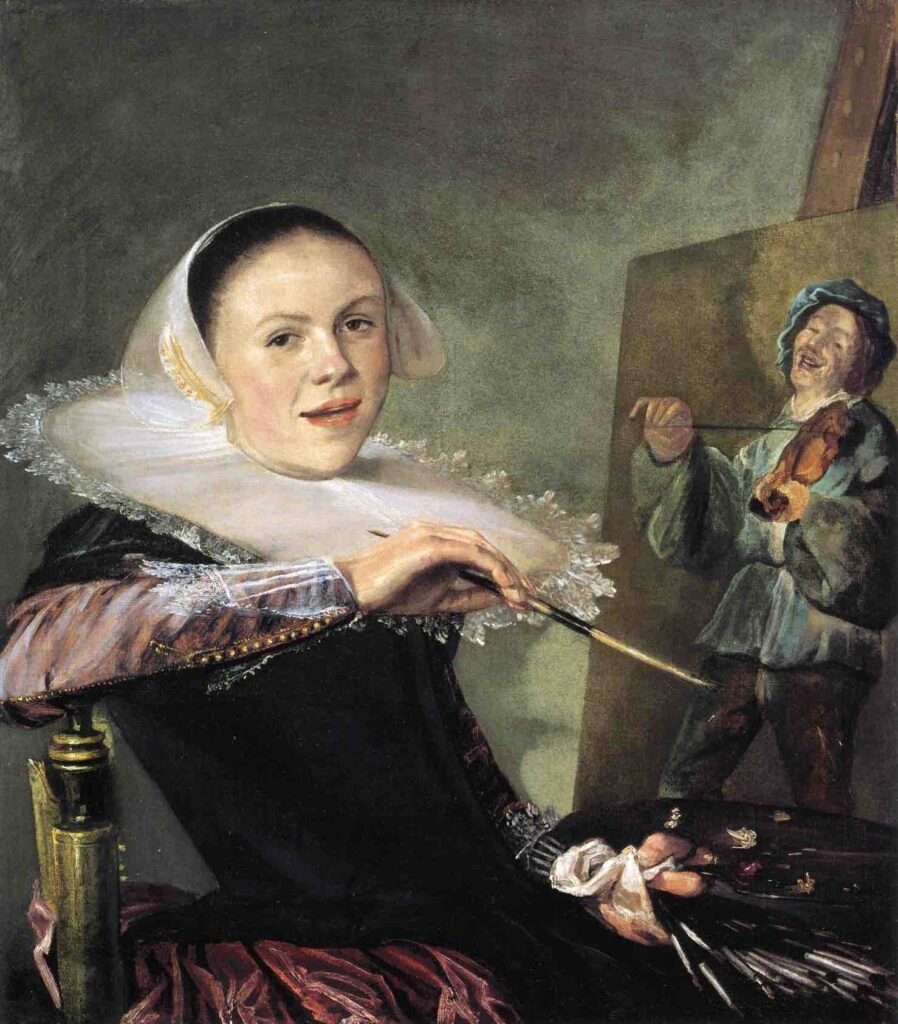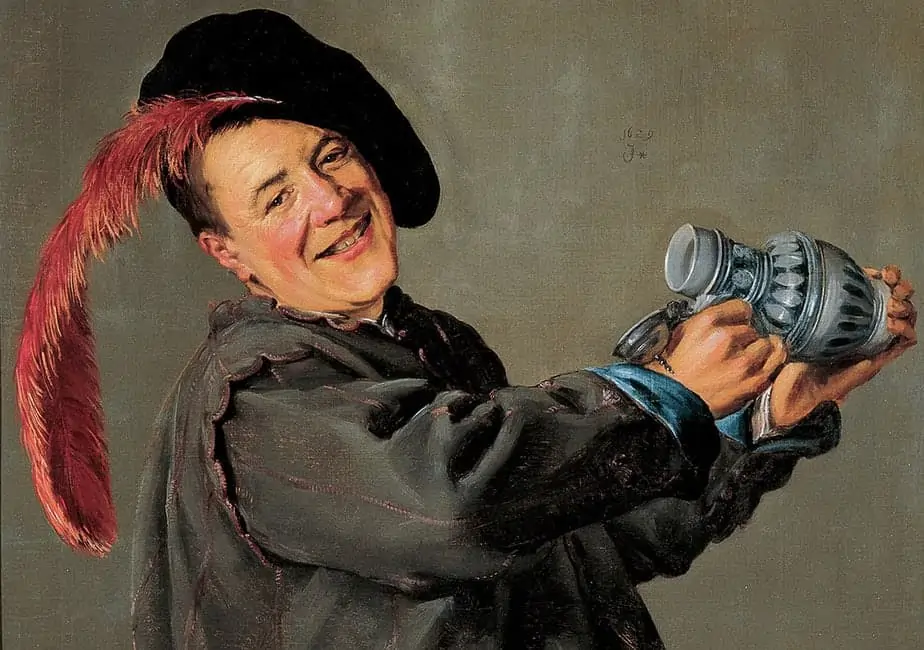Numerous renowned artists are known for their self-portraits in the art world, but one often overlooked is Judith Leyster’s remarkable piece.
Many consider her self-portrait to serve as an advertisement for her skills—a notion that I find especially compelling given the era in which she lived. Women were rarely recognized as artists during her time and had far fewer rights and privileges than today. Join us as we delve deeper into the significance of Judith Leyster’s groundbreaking self-portrait and why it remains essential.
Table of Contents
- Judith Leyster’s Self-Portrait: A Bold Declaration Of Artistic Skill And Independence
- The Portrait: A Visual Statement For Judith Leyster
- Related Questions
Judith Leyster’s Self-Portrait: A Bold Declaration Of Artistic Skill And Independence
Judith Leyster’s self-portrait is not just a mere reflection of the artist but a deliberate and confident statement of her capabilities, achievements, and uniqueness. Created presumably before her admission to the guild in 1633, the portrait showcases Leyster in a moment of self-assured interaction with the viewer.

She momentarily pauses from her painting, almost as if inviting a visitor into her studio. This painting shows what a great artist Judith Leyster is and why she deserves our attention.
Judith Leyster lived in a time when women had limited rights. Most women stayed home and cared for their husbands, families, and farms. But Judith Leyster had other plans for her life, to be a great artist.
She was one of those rare women artists who, during her lifetime, was able to see some success. Theodore Schrevel, a Dutch Golden Age writer and poet, and a local historian said this about Judith Leyster in 1648:
There also have been many experienced women in the field of painting who are still renowned in our time, and who could compete with men. Among them, one excels exceptionally, Judith Leyster, called “the true Leading star in art.”
Theodore Schrevel, Harlemias, 1648
What fascinates me about this quote is the timing. It was uttered in 1648, twelve years before Judith Leyster died in 1660. This suggests that she was already highly regarded and celebrated as a masterful artist even during her lifetime.
The fact that she was being written about and praised for her artistry before her death is a testament to her undeniable talent and the recognition it garnered. And that a woman artist was even acknowledged during this time was truly remarkable.
About The Artist Judith Leyster (1609-1660)

Born in Haarlem in 1609, Judith Leyster hailed from a family associated with the brewery business. The name ‘Leyster’ is derived from the family brewery, called the “Ley-ster,” which means the “lode or guide star.”
Her early life remains somewhat mysterious, with scant information on her artistic training. It is speculated that she might have been a pupil of the eminent Haarlem painter Frans Pietersz de Grebber, given their mentions in Samuel Ampzing’s 1628 tribute to Haarlem.
After a brief relocation to Vreeland near Utrecht, her family returned to Haarlem, where Leyster witnessed the baptism of one of Frans Hals’ children in 1631. Though no direct evidence links her apprenticeship with Hals, her works betray an unmistakable influence, particularly in her adoption of his loose brushwork style.
Rise To Professional Acclaim Of Judith Leyster
In a time when female artists rarely received recognition, Leyster enjoyed a respectable degree of professional success. Post her guild admission, she even took on students.
However, her painting career was largely sidetracked after marrying fellow painter Jan Miense Molenaer. After marriage, the couple moved around, settling in Haarlem until Leyster died in 1660.
Leyster almost faded into obscurity after her death, with most of her works either unattributed or credited to other artists like her husband or Frans Hals. It was not until an English court case in 1892 that her oeuvre was recognized correctly.
A painting initially attributed to Frans Hals was discovered to bear the initials “JL,” leading to reevaluating her contributions.
The Portrait: A Visual Statement For Judith Leyster
Leyster’s self-portrait doubles as her own best advertisement, showcasing not just her skills but also her products. She boldly demonstrates her skill with a brush and a palette, effortlessly painting a ‘merry company’—a famous genre scene of the period.
It’s worth noting that infrared photography revealed that the initial painting on the easel had been a woman’s face, quite possibly Leyster’s. Replacing it with a fiddler, she ingeniously promoted her portraiture and genre painting skills in one fell swoop.
Style And Influences
The stylistic choices in the self-portrait—its casual pose, fluid brushwork, and the feeling of a moment captured—echo the innovations pioneered by Frans Hals. Whether or not she formally studied under him, it’s evident that Leyster was a keen observer and a successful proponent of his revolutionary style.
Judith Leyster’s self-portrait is a historical treasure that serves multiple purposes. It portrays the artist in her element and as a powerful tool for self-promotion. It is a brilliant summary of her artistry, advertising her skills, her popular products, and, most importantly, her confidence and independence as an artist.
Through the careful study of this painting, we can gain significant insights into the character of a woman who defied social norms to leave an indelible mark on the world of 17th-century Dutch art.
When considering female artists who serve as role models, Judith Leyster should be on the list. Despite navigating a male-dominated field, she achieved considerable success during her lifetime.
Although much of her work went unrecognized for an extended period, today, she has rightfully reclaimed her status as a great artist.
Anita Louise Art is dedicated to art education, great artists, and inspiring others to find and create their art. We love art that uplifts and inspires. #ArtToMakeYouSmile! #ArtToMakeYouHappy!
If you want to see any of my art, you can find out more by clicking here. You can discover more by clicking here if interested in what inspires me and my paintings.
We have a free newsletter and would love you to be part of our community; you can subscribe to the newsletter by clicking here. I would be happy to talk to you if you have any questions. You can reach me, Anita, by clicking here.
Subscribe to our Anita Louise Art YouTube Channel with great videos and information by clicking here.
Join us for our podcast “5 Minutes With Art.” Spend 5 minutes a week with us to discover and learn about great art and artists. You can find out more about our podcast by clicking here.
Related Questions
20 Of The Most Beautiful Paintings Of Women Ever Created
The portrayal of women has long been a captivating and cherished subject in the annals of art history. From the hands of renowned male painters to the brushstrokes of influential female artists, the depiction of women has yielded a rich tapestry of remarkable and celebrated works of art.
By clicking here, you can learn more by reading 20 Of The Most Beautiful Paintings Of Women Ever Created.
5 Women In Renaissance Art: Overcoming Barriers
The Renaissance period was a time of great artistic and cultural flourishing and strict gender roles and limitations for women. Despite these barriers, a few women still managed to break through and make a name for themselves in art. We will highlight five women artists from the Renaissance who overcame societal norms and gender biases to create some of the most iconic works for their time.
By clicking here, you can learn more by reading 5 Women In Renaissance Art: Overcoming Barriers.
7 Women Impressionist Artists, To Admire, Know and Remember
When we think of Impressionist artists often, we tend to forget that besides all the men artists like Vincent Van Gogh and Claude Monte, there are also some very influential women impressionist artists, many of these impressionists women artists were leading figures in the impressionist movement. Still, as a lot of their painting was more feminine in nature, they did not always receive the same fame as the male impressionist painters.
By clicking here, you can learn more by reading 7 Women Impressionist Artists, To Admire, Know and Remember.

